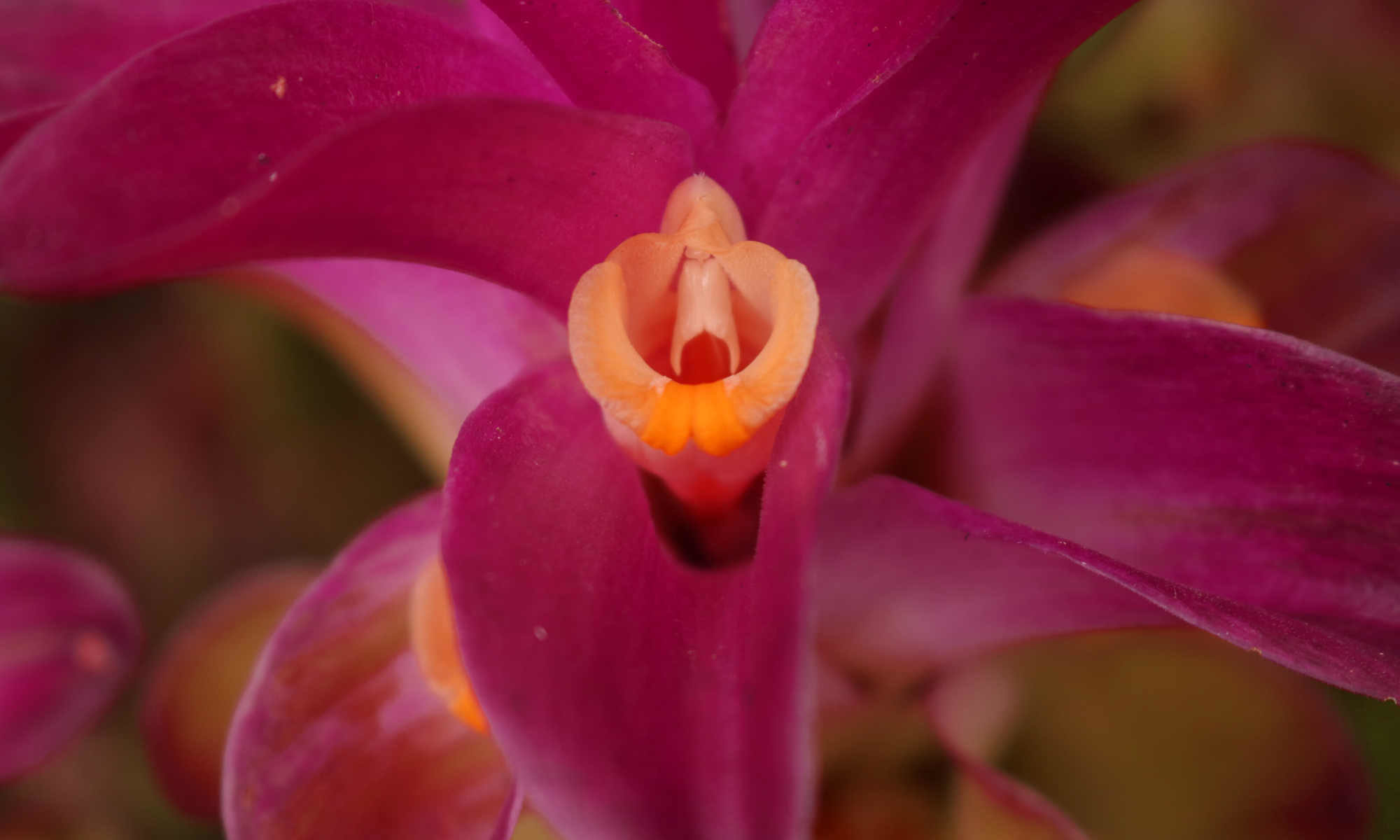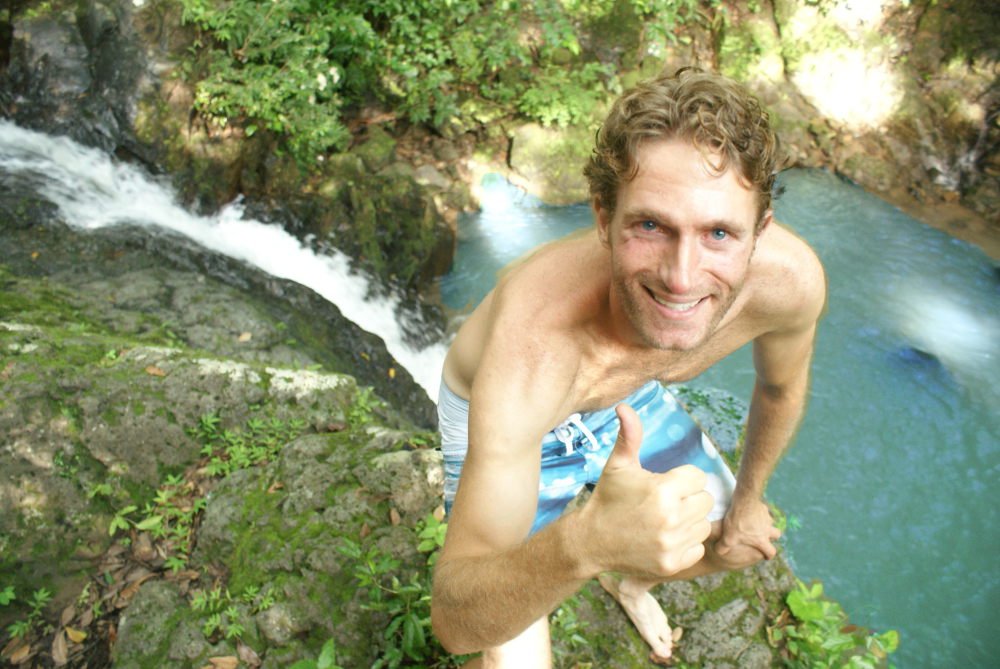Nearly everyone experiences at least an occasional headache, while around 15% of people suffer its most painful and debilitating form, the migraine. My protocol addresses the underlying cause of these conditions, which produces long-lasting results while other practitioners rely on techniques that at best mask the symptoms and sometimes contribute to a progressive worsening of the disease.
Jump to…
A headache is like an alarm that begs for a specific action. The alarm should persist, at least intermittently, until the original cause for the alarm has been solved. Failing to address the real cause of these conditions, the noise continues. Lacking a viable method of achieving true peace, some simply ignore the noise, while others hide from it with prescription or illicit drugs.
The American Migraine Foundation states that “there is no cure for migraines” and that “Current Migraine Treatments are Inadequate”. I agree with them regarding the current popular treatments, but I expect they may change their opinion once they learn about the system that I have created.
A Description of Migraines
From the New England Journal of Medicine: There are two main types of migraine. Both types of migraine typically affect patients for the major part of their lives, at considerable socioeconomic and personal expense. (1)
The first, migraine without aura (previously called common migraine), is characterized by headache attacks lasting 4 to 72 hours. The headache is usually severe, unilateral, pulsating, aggravated by physical activity, and accompanied by nausea, vomiting, photophobia (hypersensitivity to light), and phonophobia (hypersensitivity to sound). (1)
In the second type, migraine with aura (previously called classic migraine), the attacks are initiated by neurologic symptoms called aura (visual, sensory, speech, or motor symptoms). Otherwise, the attacks are the same as those in migraine without aura. (1)
Migraine Statistics
According to the New England Journal of Medicine, six percent of the population have migraine without aura during a one-year period, and 9 percent have it at some time in their lives. The corresponding figures for migraine with aura are 4 percent and 6 percent. The male:female ratio for both types of migraine is approximately 1:3. (1)
The World Health Organization lists Migraines as one of the 20 most disabling medical illnesses in its Global Burden of Disease Study (updated in 2004), because the average migraine sufferer loses 1.3% of their years due to disability (YLD). 1.3% may sound like a small number, but it translates to 114 hours per year or 8,550 excruciating hours or nearly one full year of intense pain over a 75-year lifespan. The WHO also states that in terms of its disabling effect, migraines compare with dementia, quadriplegia and active psychosis.
The Migraine Trust, a charitable health and medical research center for migraines estimates that there are an estimated 190,000 migraine attacks every day in the United Kingdom alone.
Barriers to effective care
(From the World Health Organization)
Lack of knowledge among health-care providers is the principal clinical barrier. Worldwide, on average only four hours of undergraduate medical education are dedicated to instruction on headache disorders. The minority of individuals with headache disorders worldwide are professionally diagnosed; 40% for those with migraine and TTH, while for MOH it is only 10%.
Poor awareness extends to the general public. Headache disorders are not perceived by the public as serious since they are mostly episodic, do not cause death, and are not contagious. The low consultation rates in developed countries may indicate that many sufferers are unaware that effective treatments exist. 50% of people with headache are estimated to be self-treating.
Many governments, seeking to constrain health-care costs, do not acknowledge the substantial burden of headache on society. They might not recognize that the direct costs of treating headache are small in comparison with the huge indirect-cost savings that might be made (eg, by reducing lost working days) if resources were allocated to treat headache disorders appropriately.
The High Cost of Migraines
According to new data presented at the 48th Annual Scientific Meeting of the American Headache Society, migraine headaches cost American employers more than $24 billion a year in direct and indirect healthcare costs. Source: PR Newswire
Conventional Migraine Treatments
Conventional medicine recommends the use of pain medication to hide the most troublesome symptoms. Avoidance of triggers is not itself a treatment but doctors frequently recommend this as a prophylactic or preventative technique. Doctors also sometimes prescribe medications as an additional prophylactic.
Alternative Migraine Treatments
Popular alternative remedies include acupuncture, chiropractic and massage treatments.
From Wikipedia: While acupuncture is effective “true” acupuncture is not more efficient than sham acupuncture, with both appearing more effective than routine care, with fewer adverse effects than prophylactic drug treatment. Chiropractic manipulation, physiotherapy, massage and relaxation might be as effective as propranolol or topiramate in the prevention of migraine headaches…There is some tentative evidence of benefit for magnesium, coenzyme Q(10), riboflavin, vitamin B(12), and feverfew… Of the alternative medicines, Petasites hybridus (butterbur) has the best evidence for migraine prevention.
Common Migraine Triggers
Many people find that their migraine begins soon after consuming a particular food, or in the presence of a particular environmental factor. Author Alexander Mauskop lists these common triggers as: cheese, bacon, nuts, avocados, chocolate, yeast, spices, hot dogs, corn, anything fermemented, red wine, beer, beverages containing caffeine, skipping meals, stress, fatigue, bright lights, strong odors, certain medications, perfumes and other odors, air pollution, hormonal changes, the weather, seasonal changes and altitude.
The Problem with Avoiding Migraine Triggers
While some of these items should rightfully be avoided anyway, others, such as avocados, spices, the weather and seasonal changes are healthy, enjoyable parts of living well. Avocados provide some of the healthiest fat on Earth. As for spices… surely migraine sufferers shouldn’t be expected to avoid all 350+ common spices, many of which provide important nutrients and are indispensable in preventing many diseases. Those living high in the mountains could certainly move their household to a lower city, but with a considerable expense and inconvenience. And just how would you go about avoiding the weather. Either you must stay indoors forever, or perhaps move to San Diego, Malta or Colombia. You may indeed get some more enjoyment out of life by selecting one of these places to live, but this certainly cannot be an acceptable recommendation for avoiding migraines.
Avoid These Migraine-Causing Chemicals
I strongly suggest avoiding all of the following chemicals, even if you do not suffer from migraines. These chemicals are linked with migraines and a host of other serious physical and mental conditions ranging from Alzheimer’s to cancer to epileptic seizures and more.
Aspartame, a popular sweetener found in many packaged foods labelled “sugar free”, is linked to migraines and many other conditions. The journal Pediatric Neurology recently published a study on teens that frequently chew gum (most of which contains the chemical Aspartame). Of the thirty patients studied, 26 reported significant improvement and 19 reported a complete improvement after discontinuing the habit of gum-chewing. All twenty patients that resumed the habit experienced headache or migraine within days.
Bisphenol A (BPA), which mimics oestrogen, frequently leaches into food and beverages from its plastic container. A recent study published in the journal Toxicological Sciences provides more proof that BPA causes migraines.
Monosodium glutamate (MSG) is an excitatory neurotoxin (or excitotoxin) that is commonly added to packaged foods and even restaurant foods (particularly Chinese restaurant food) to enhance the neurologic perception of the food’s taste. In other words, the food does not actually taste better, but the brain is tricked into perceiving a better taste. The brain cells that are excited by MSG then die, so the enhanced pleasure comes at a great cost. A 2010 study from the University of Oxford found that a gene called TRESK was implicated in some migraine patients. The researchers found that if the TRESK gene malfunctions, other factors (such as MSG) can more easily trigger a migraine.
Migraine Medications
Web-md.com lists 91 pharmaceutical medications for temporary migraine relief. Some doctors prescribe one or more of these medications for acute migraine attacks and others also prescribe medication as a prophylactic, that is, to prevent future migraines. Prophylactic treatments are considered effective if they cut down the severity or frequency of the migraine attacks by half or more.
Medication-Overuse Headaches (MOH)
A common side effect of migraine medicines is that they actually cause migraines.(2) Sometimes this side effect does not appear the first few times a new medication is taken, suggesting that the medication accumulates in the body, worsening the condition over time. This is called Medication-overuse Headaches (MOH).
This study, sponsored by the pharmaceutical giant GlaxoSmithKline examined Non-steroidal Anti-inflammatory Drugs (NSAIDs) Alone or With a Triptan and Reports of Transition From Episodic to Chronic Migraine. The study was completed in 2011 but the results were never published. Dare I guess the reason that the results remain hidden? The most likely answer is that the results of the study were not particularly flattering to the drug giant.
Other Common Side Effects of Popular Migraine Medications
Other side effects of popular migraine medications include an increased risk of heart attacks and strokes, gastrointestinal problems such as ulcers and bleeding, sometimes-fatal hepatic (liver) problems, renal (kidney) problems, muscle weakness, dizziness, nausea and mental health problems including depression, anxiety, irritability, and psychotic reactions, and sleep disturbances such as insomnia and nightmares. Some migraine medications cause weight gain and hair loss. Using Botox as a migraine treatment can cause headaches, bruising and pain at the injections sites, drooping eyelid, muscle pain and stiffness, and the inability to raise the eyebrows for the 3 months the Botox is in effect.
My Quest for the Migraine Cure
I began searching for an effective treatment for migraine at a very young age, to provide relief for two family members. Initially I looked at massage and myotherapy, without finding immediate success in either of these methods. I began reading about reflexology, acupuncture, chiropractic and other physical manipulation techniques. Each of these methods has been successful for some patients but not for the majority. I read up on homeopathy, naturopathy, and nutrition. These last two seemed to offer a real solution that would require patience and dedication on the part of the sufferer to produce results. I have incorporated this knowledge into my protocol, but I still needed to develop a method to provide immediate relief for those experiencing an acute migraine attack, and a system that could pre-empt future migraine attacks for at least the length of time needed to implement the naturalistic nutrition and lifestyle plans. I continued reading and experimenting for many years.
My Key Discovery: Wiggliness is Wellness!
By experimenting on more than a thousand volunteers I discovered that those suffering with migraines (and other serious health conditions) were less wiggly than healthier volunteers. I began to associate wiggliness with wellness. I noticed that wiggliness was not directly associated with any other physical attribute such as flexibility, body constitution/shape or overall fitness level. I began to focus more and more on wiggliness. Babies are the wiggliest humans and tend to be healthy. The elderly are the least wiggly and tend to suffer many chronic health conditions. There are other factors at play besides wiggliness, of course, but I was nonetheless interested to find a method for restoring wiggliness. I eventually developed a method that works, and the results have been called “miraculous” by those that experienced immediate and lasting relief from my system, when countless other systems had previously failed.
My Protocol for Immediate and Lasting Migraine Relief
After more than two decades of experimentation, I succeeded in developing a highly effective, non-invasive, non-pharmaceutical treatment protocol for chronic headaches and chronic migraines.
The hallmark of my system is a unique method of restoring the normal energy flow (wiggliness!) throughout the entire body, such that the body is able to “heal itself” quickly and efficiently. This self-healing includes proper oxygenation and detoxification, which are apparently hindered by a lack of what I call “wiggliness”.
In most cases, my migraine-healing method can eliminate an acute migraine attack in under ten minutes. By the end of the first session (which typically lasts 1.5 – 2 hours), the energy flow has been restored to the extent that approximately 80% of migraine sufferers will not have a recurrence for an extended period, generally 6 months – 1 year, even without a follow-up treatment. In the remaining 20% of subjects where migraines do continue, they are generally more than 50% less frequent and less severe. In these cases, a follow-up treatment may further improve the condition.
My migraine-healing method is designed to provide immediate relief from an acute migraine attack, as well as an effective non-pharmaceutical prophylactic against the migraines that would otherwise be forthcoming. Migraine pain is debilitating and demoralizing. It is therefore necessary to alleviate the condition for as long as possible, to afford the patient time and “space” to implement the remainder of my anti-migraine protocol. My migraine-healing treatment provides the necessary freedom from pain and stress and then focuses on making the result permanent through lifestyle training.
My migraine-healing method involves a sequence of 40 techniques of gentle body manipulation, each of which is set to a carefully-selected piece of music that contains a specific “pulse”. The movements must perfectly correspond with the pulse of the music. The majority of the techniques are quite simple. This allows my system to be taught to many people with different backgrounds. A chiropractor, a doctor or an experienced massage therapist will be able to master all 40 techniques with as little as three days of practice. Compassionate but less-experienced care-givers will still be able to perform 35 of those techniques.
The goal of my system is to allow energy to pass through the body “unobstructed” (to the greatest extent possible during a single session). If a serious blockage can be reduced by 80% during the session, the migraine condition will be halted. If the person were suffering an acute migraine attack just prior to the treatment, this will have disappeared. If the person usually suffers a daily migraine, she will likely enjoy a considerable period of time free of further attacks. This period is usually a minimum of several months but can be extended indefinitely with a very simple daily exercise that takes just 1-2 minutes to maintain the benefits of the treatment over the long term.
In addition to migraine symptoms vanishing, the patient may experience other benefits. If she previously had suffered from insomnia or anxiety, these conditions will also greatly improve and there may also be an improvement in some cases of depression.
The remainder of my protocol (besides its hallmark treatment described above) relates to living in harmony with nature. I developed The Lotus Lifestyle to provide the 8 simple steps for avoiding migraines and pretty well every other serious health problem:
- Breathe clean air, softly and deeply.
- Get adequate sunlight.
- Drink clean, living water.
- Eat plants to alkalize.
- Get wiggly with my migraine-healing treatment, or with fluid exercise such as tai chi.
- Detoxify with saunas, massage or fasting.
- Meditate or pray.
- Restand dream .
The Lotus Lifestyle is designed for everyone, not just migraine sufferers. It provides the guidelines for obtaining the correct nutrients and avoiding and eliminating harmful toxins. It is possible to follow The Lotus Lifestyle without spending a penny. I frequently teach this method in schools and when I am invited as a guest speaker. At my wellness center The Lotus Garden, visitors “learn by doing”… that is to say, they live all eight components of The Lotus Lifestyle, so they can immediately feel the dramatic improvement in their overall wellness. Daytime visitors can get an immediate boost in their energy and a dramatic reduction in pain and they can get a taste of delicious, healthy food. Guests that stay a longer period can fully detox and fully renew themselves, while breathing clean air and sampling infinite varieties of healthy meals.
Please do not hesitate to contact me with your questions or comments, or to book a visit to the Lotus Garden.
References
- Understanding the Biologic Basis of Migraine: Jes Olesen, M.D., New England Journal of Medicine, December 22, 1994
- Too frequent use of painkillers can cause rather than cure headaches: Hawkes N. http://www.ncbi.nlm.nih.gov/pubmed/22991196 British Medical Journal. September 18, 2012
- Non-steroidal Anti-inflammatory Drugs Alone or With a Triptan and Reports of Transition From Episodic to Chronic Migraine (study completed but results never published) ClinicalTrials.gov Identifier: NCT01435941
-
The Influence of Excessive Chewing Gum Use on Headache Frequency and Severity Among Adolescents, Pediatric Neurology, Nov 1, 2013
- Migraine Headaches, Journal of American Medical Association, June 24, 2009, Vol 301, No. 24
- Excitotoxins in Foods, Neurotoxicology. 1994 Fall;15(3):535-44.
- The American Migraine Foundation
- PR Newswire American Headache Society
- World Health Organization Global Burden of Disease Study
- The Migraine Trust
This article was originally published on October 1, 2012 and was last edited December 18, 2013.






















